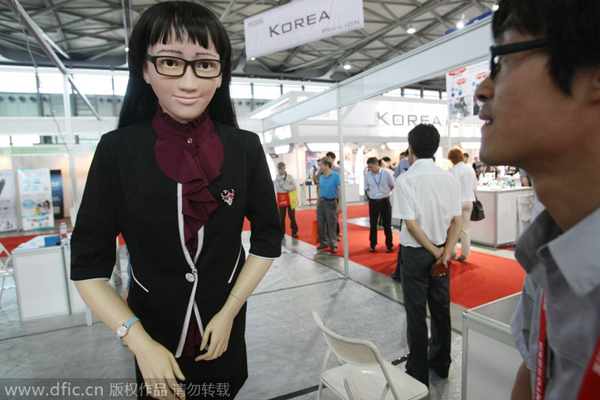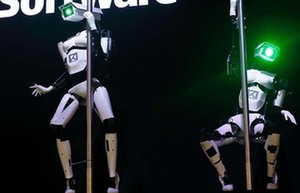|
 |
|
A visitor looks at a humanoid robot during the 2014 China International Robot Show in Shanghai, China, 9 July 2014. [Photo/IC] |
Kuka AG of Germany, one of the world's leading suppliers of robotics as well as plant and systems engineering, opened its first overseas factory in Shanghai in March, which the company says will be able to produce 5,000 robots a year, a third of its production worldwide.
ABB Group of Switzerland, a major supplier of industrial motors and drives, entered China in 2005 and has already localized its whole robotic industry chain, including research, manufacturing and aftersales.
"China has a huge number of factories that will need robots, but currently the density of robot use is about a third of the world's average, so we see great potential here," says Daisy Qi, product group head at ABB Engineering (Shanghai) Ltd.
Song Xiaogang, executive vice-president of the China Machinery Industry Federation, says the continuous rise in labor costs in recent years has been the main driver for the booming robotics market.
"China's demographic dividend has been diminishing over the past few years. Labor costs have increased 15-20 percent every year," he says. "This has had a massive impact on labor-intensive companies in traditional sectors, whose products are already delivering low profit margins."
Experts suggest the younger generation of Chinese industrial workers born in the 1980s and '90s are also more choosy, not only about the work they do but also about their working conditions.
Many even refuse to work in what could be considered traditional manufacturing industries, regardless of salary.
National Bureau of Statistics figures show an aging population is adding to the industrial tension. In 2012, China's working population was 937 million, 3.45 million less than in 2011, and last year, the number fell further to 920 million, accounting for about 67.6 percent of the entire population.
"The working population will continue to fall, so using robots has become an important tool to help companies maintain or improve their productivity," says Song, adding that robots are also better at doing repetitive, tedious and dangerous work.
The three-day Shanghai robot show last month attracted 216 companies from more than 18 countries and regions, as well as 38,572 visitors, a jump from last year's 27,371, showing the increased use of robots is capturing the public's imagination, too.
Shen Hongwen, deputy general manager of Yuzhou Yilan Copper and Aluminum Industry Co Ltd of Henan province, says his company plans to invest millions in robots this year.
"A worker's wage is about 3,000 yuan ($480) to 4,000 yuan a month, and is increasing.
"A robot that costs about 200,000 yuan is equally capable of doing the work of five workers, and that cost can be recovered in just one or two years."
As industrial China continues to transform and upgrade in search of better margins, the demand for robots is expected to rise, particularly in the country's manufacturing heartlands.
Traditional labor-intensive industries have been encouraged to diversify, or at the least operate in a more sustainable, environmentally friendly way.
"Industrial transformation means higher dependence on automation and precision, and the robot is the perfect tool for that," Song says. "The Chinese manufacturing sector has huge scale and diversity, much of which needs upgrading. That's why the market is growing so quickly."
Foxconn, the major supplier of components to Apple Inc in China, has vowed to use more robots in its manufacturing operations across the country, to replace dangerous, boring and repetitive work.
|
 |
 |
